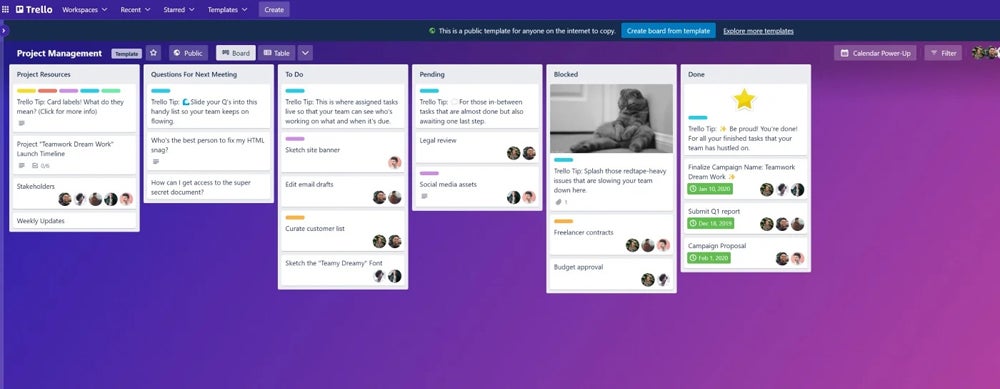
Trello and Asana are two popular project management software platforms that both score high marks for their ease of use. While they may appear similar on the surface, once you start digging deeper, their differences become apparent:
| Project views on free plan | ||
| Native Gantt charts | ||
| Native task dependencies | ||
| Native time tracking | ||
| Starting price (billed annually) |
||
|
|
Both Trello and Asana offer a forever free plan, but each platform places different limits on it: Trello supports only 10 project boards but unlimited users, while Asana supports unlimited projects but only 10 members. If this is a dealbreaker for your company, check out our list of the best free project management software for other recommendations.
Each platform also offers three pricing plans to choose from, with Trello’s pricing plans being more affordable than Asana’s plans. However, Trello does rely on optional power-ups to provide certain features, such as time tracking, so adding on multiple paid power-ups will increase the total price accordingly.
For more information, see the full Trello review and check out our Trello vs. Monday and Trello vs. Notion comparisons.
For more information, see the full Asana review and check out our Asana vs. Notion comparison.
Trello’s Free and Standard plans only come with a single project view, the kanban boards. You must upgrade to the Starter plan to get additional views, including timeline, table, maps and calendar view. I found having only a single project view to be rather limiting, especially since so many Trello alternatives offer multiple project views, even for the free plan.
In contrast, Asana’s free plan comes with three views: list, board and calendar views. Starter users get two more views: timeline and Gantt charts. Trello does not offer native Gantt charts (its timeline view is too simplified), so you’ll need an additional power-up for that. For this reason, I recommend Asana over Trello if you need anything other than a Kanban board.
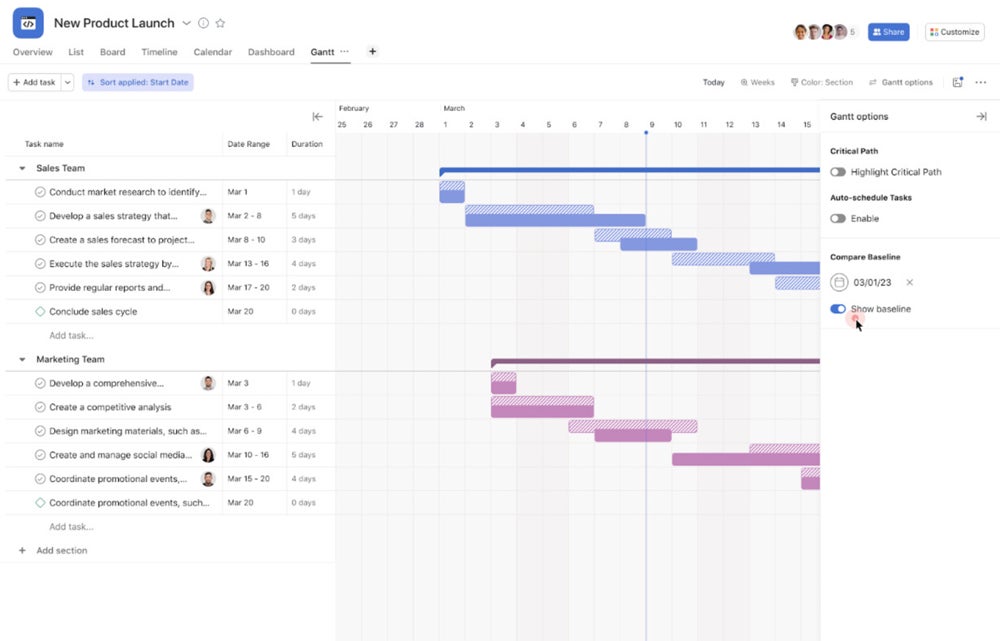
Both Trello and Asana offer the same basic task management features, such as the ability to set a due date and comments on tasks. However, Asana offers support for more advanced task management, including recurring tasks, task dependencies and subtasks. You can add certain features, such as recurring tasks, to Trello through power-ups, but the functionality isn’t native to the platform.
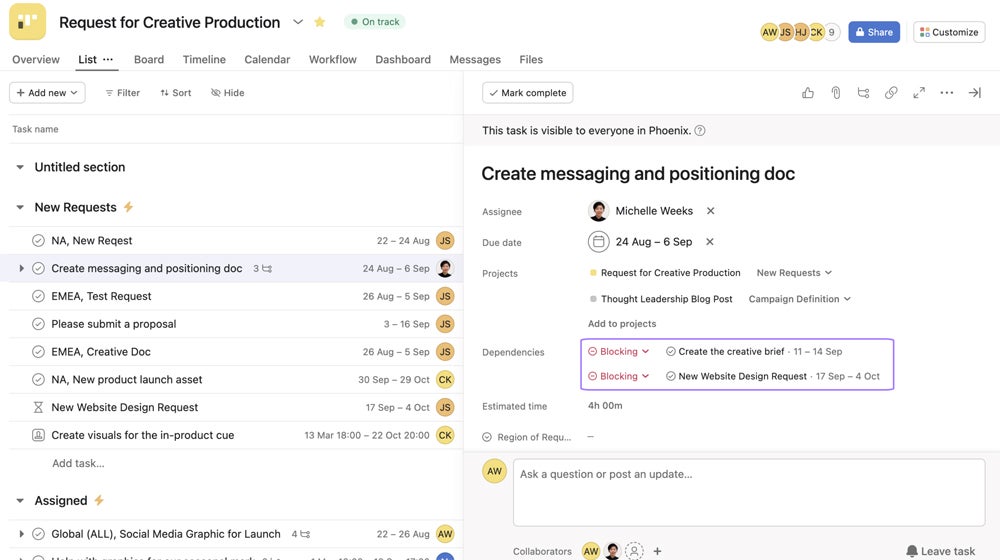
Asana also allows you to assign a task to a single person in addition to having multiple people follow it. Trello only allows people to join a task as a member or not — you can’t actually assign the task to someone specific. If you need more advanced task management software beyond the basics, then I suggest going with Asana over Trello because it offers more functionality out of the box.
Asana’s Enterprise plan offers advanced features such as resource management and native time tracking. With this pricing plan, users can create critical paths and view workload for capacity planning. Meanwhile, Trello relies on third-party power-ups for these advanced resource management features.
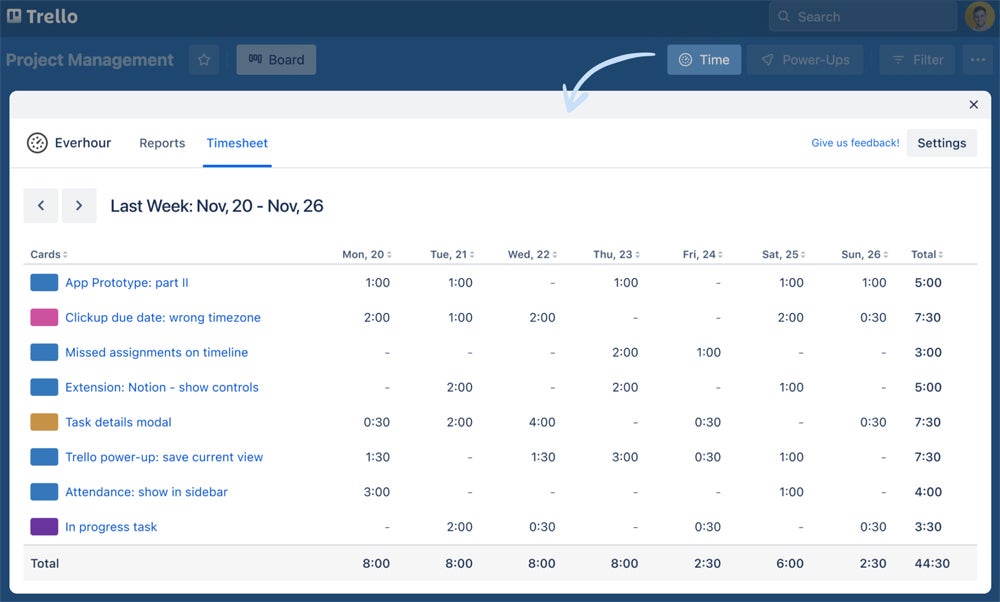
While this does mean that Trello is highly customizable, it can be annoying to set up these extra features, and many of them have an additional cost associated with them as well. If you want everything on one platform, you’ll need to go with Asana’s Enterprise plan or check out one of the many Asana alternatives.
Asana has more native reporting and analytics features compared to Trello. Paid users get access to project dashboards that summarize various metrics, and more expensive plans get access to even more insights. Trello has simple built-in reports, but it only offers basic functionality and metrics. You will need to integrate it with a third-party application to get access to a full range of reporting and analytics tools.
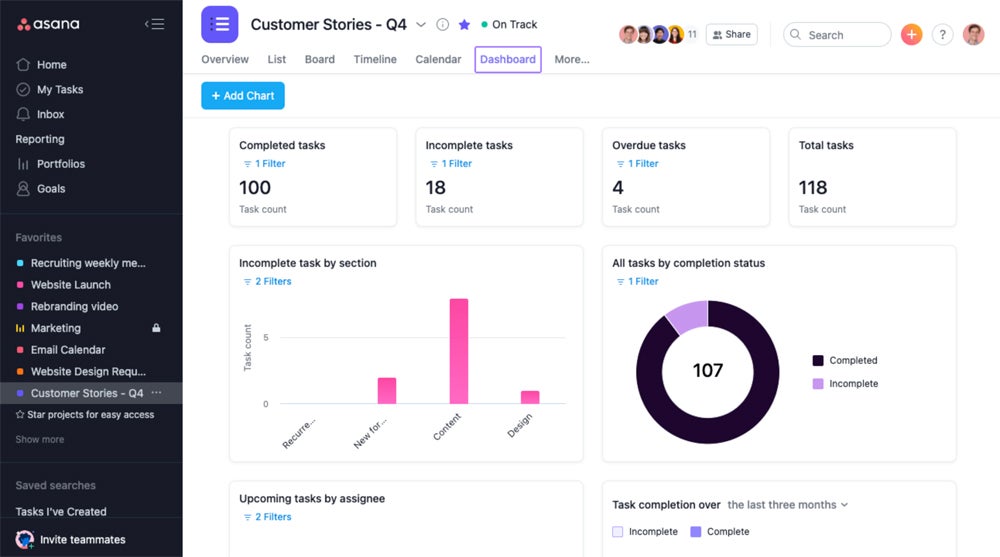
Both Asana and Trello scored a perfect 5/5 on our comprehensive rubric when it comes to ease of use. Both platforms are easy to set up and simple to navigate, thanks to well-designed and logical interfaces with drag-and-drop capabilities. Even workers who have never used project management software before will find either platform easy to learn.
Asana and Trello offer highly rated mobile and tablet apps for both iOS and Android, with average ratings ranging between 4.3 and 4.7 stars at the time of writing, so you can get work done on the go. Having used both mobile apps, I will say that it’s easier to access the full range of features using the two web apps on the computer, but the mobile apps are great for quickly responding to comments or checking off tasks.
At first glance, Trello might seem like a more secure option than Asana. Atlassian is known for its security protocol, and it even offers an optional add-on called Atlassian Access for extra protection. However, earlier this year a hacker was able to use an exposed Trello API to link more than 15 million private email addresses to Trello accounts.
The API has been changed to require authentication, but anyone with a free Trello account can still access it, and a bad actor could potentially leverage this vulnerability again. Until Trello takes more steps to safeguard user data, I strongly recommend considering Asana, which has not had a similar breach yet.
Between Asana and Trello, I recommend Asana as long as you have the budget for it. Asana’s free plan supports unlimited projects and tasks as well as multiple project views to choose from for small teams under 10 people. I do like that Trello’s free plan supports unlimited members, but with a cap of only 10 projects, most teams will hit that limit quite soon, regardless of size.
Asana’s paid plans are more expensive than Trello, which is certainly a drawback, but you also get more features for the money. Even with its most expensive pricing plans, Trello still relies on external power-ups for essential functions such as task dependencies, recurring tasks, Gantt charts and time tracking. Many of these power-ups have additional costs associated with them, which can cancel out any cost savings you might see from choosing Trello over Asana.
I also find Trello’s recent data breach concerning, especially given that Atlassian has built much of its reputation on providing security. While I have enjoyed using Trello’s highly intuitive kanban boards in the past, I recommend that you seriously consider possible data breaches before switching to Trello.
To test out Asana and Trello, I signed up for free accounts on both platforms and also downloaded the mobile apps. I also consulted the scoring rubrics created by our expert testings here at TechRepublic. Features that I considered included project views and templates, task management, time tracking, resource management and reporting. I also weighed additional factors such as ease of use, privacy, security, user interface design and customer support.